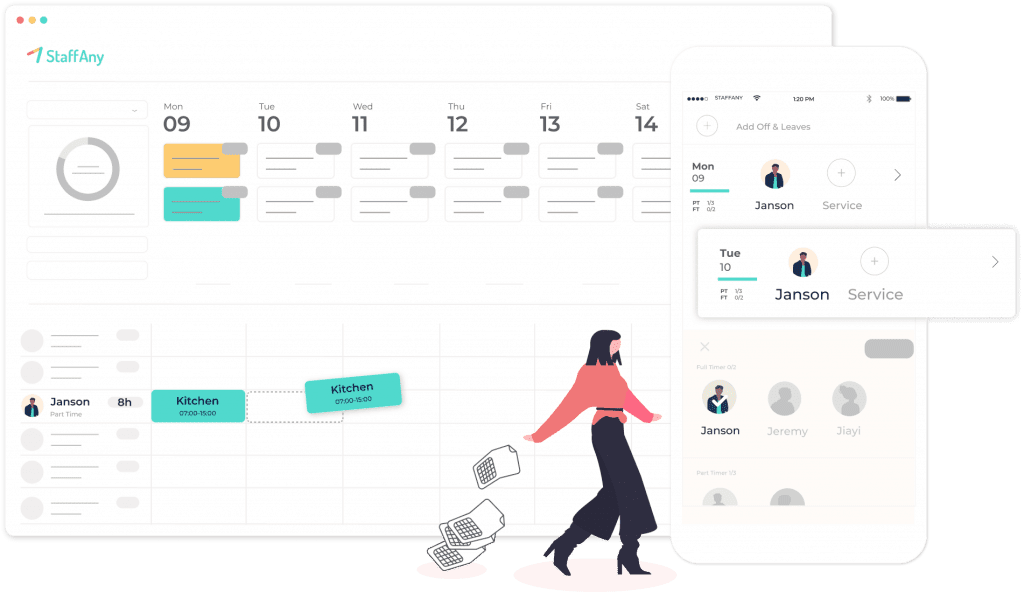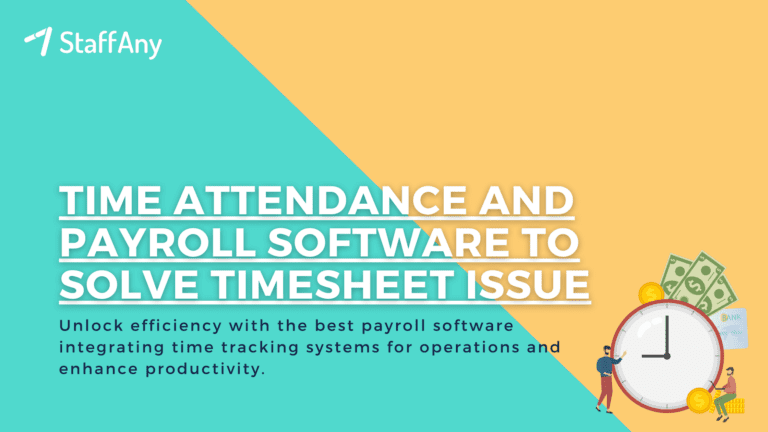Scheduling staff is an essential task for any business, regardless of size or industry. Proper staff scheduling can help ensure that the right people are in the right place at the right time, which is key to running a successful operation. Effective staff scheduling also ensures that you have the right number of employees working each shift, which can help reduce labour costs and improve overall productivity.
In this article, we’ll discuss the importance of staff scheduling and provide some helpful tips on how to schedule staff effectively.
The Importance of Staff Scheduling

Staff scheduling is a critical aspect of any business operation. It involves assigning employees to work specific shifts and hours, ensuring that the right people are in the right place at the right time. Effective staff scheduling is essential for many reasons, including:
1. Improve Efficiency
Effective staff scheduling can help improve efficiency within a business. By ensuring that the right people are scheduled for each shift, you can ensure that tasks are completed on time and that there is no overlap or downtime between shifts. Proper staff scheduling can help reduce wait times for customers and improve the overall flow of operations, which can lead to increased customer satisfaction.
2. Reduce Labour Costs
Labour costs can be a significant expense for any business, and proper staff scheduling can help reduce these costs. By ensuring that you have the right number of employees working each shift, you can avoid overstaffing or understaffing, which can be costly for a business. Overstaffing can result in wasted resources and increased labour costs, while understaffing can lead to decreased productivity and lower customer satisfaction.
3. Improve Employee Satisfaction
Staff scheduling is an essential factor in employee satisfaction. When employees know when they are working, they can plan their personal lives accordingly. This can help improve morale and reduce employee turnover. Proper staff scheduling can also help ensure that employees are not overworked or burned out, which can also impact job satisfaction.
4. Meet Business Demands
Effective employee schedules is essential to meet the demands of a business. This includes understanding peak periods of operation, seasonal trends, and events that may impact staffing requirements.
By planning ahead and scheduling accordingly, businesses can ensure that they have enough staff to meet demand and avoid situations where customers have turned away due to a lack of staff.
5. Ensure Compliance
Staff scheduling can also ensure compliance with labour laws and regulations. This includes laws related to overtime, breaks, and minimum staffing requirements. Proper staff scheduling can help businesses avoid costly penalties and legal issues related to non-compliance. Also, businesses that prioritise staff schedules are more likely to succeed and achieve their goals.
Read more: Graveyard Shift: Meaning, Advantages, and Disadvantages
Steps to Schedule Staff Effectively
Effective staff scheduling is crucial to the success of any business, but it can be challenging to do correctly. The following are steps businesses can take to schedule staff effectively:
1. Determine Staffing Needs
The first step to effective staff scheduling is to determine your business’s staffing needs. This includes understanding your business’s peak periods of operation, seasonal trends, and other events that may impact staffing requirements. By understanding these factors, businesses can develop a staffing plan that ensures they have enough staff to meet demand without overstaffing.
2. Create a Schedule Template
Once you have determined your staffing needs, create a schedule template. A schedule template is a pre-made schedule that can be used as a blueprint for creating new schedules. A schedule template should include the days of the week, shift times, and the number of employees needed for each shift.
3. Consider Employee Availability
When creating a schedule, it’s essential to consider employee availability. This includes factors such as time off requests, preferred shift times, and any other scheduling constraints. By considering employee availability, businesses can create schedules that are fair and accommodate employees’ personal lives.
Read more: Shift Work Schedule Management in the F&B Industry
4. Use Scheduling Software
Scheduling software can be a useful tool for businesses to schedule staff effectively. Scheduling software can automate the scheduling process, allowing businesses to create schedules quickly and easily. It can also help businesses manage employee availability, track hours worked, and ensure compliance with labour laws and regulations.
5. Communicate the Schedule
Once a schedule has been created, it’s essential to communicate it to employees. This can be done through a variety of methods, including email, a scheduling app, or a physical schedule posted in the workplace. Communication is critical to ensure that employees know when they are working and can plan their personal lives accordingly.
6. Use Staff Scheduling Software
Effective staff scheduling is an ongoing process. Businesses should regularly monitor and adjust their schedules to ensure that they are meeting their staffing needs and accommodating employee availability. Regular monitoring can help businesses identify areas for improvement and make adjustments to improve efficiency and reduce costs.
Streamline your Shift Scheduling Process with Employee Scheduling Software

If you want to streamline your business operations and schedule staff effectively, consider using StaffAny’s employee shift scheduling software. Our software automates the scheduling process, allowing you to create schedules quickly and easily while accommodating employee availability and preferences.
Here are some benefits you can get by implementing StaffAny’s employee scheduling software:
1. Real Time Availabilities
With a connected workforce, know the team availability, who is on leave, and which of your part-timers are available before planning for your A-team in a familiar interface.
2. Schedule Your Staff In One Click with Auto-Scheduling
We understand that speed and accuracy are everything. Just by clicking on the shifts, you instantly assign your staff to a shift. We provide you with schedule templates that can be customised based on your needs.
3. Get Better Visibility of Labour Costs While Scheduling
Food service managers can take control of actual labor costs to optimise and achieve target manpower budget and lower operating costs to increase your take-home profits.
With StaffAny, you can also track hours worked and ensure compliance with labor laws and regulations. Contact us to learn more and get started today!











